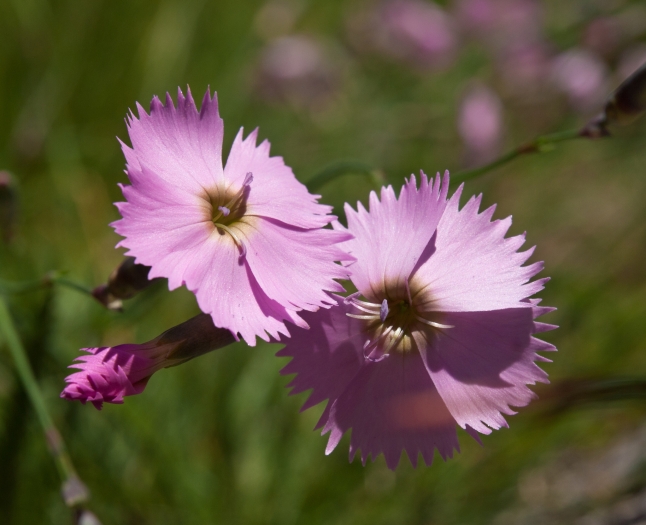Wood Pink
(Dianthus sylvestris)
Wood Pink (Dianthus sylvestris)
/
/

© Franco Folini
CC BY 4.0
Image By:
© Franco Folini
Recorded By:
Copyright:
CC BY 4.0
Copyright Notice:
Photo by: © Franco Folini | License Type: CC BY 4.0 | License URL: http://creativecommons.org/licenses/by/4.0/ | Uploader: folini | Publisher: iNaturalist |
























Estimated Native Range
Summary
Dianthus sylvestris, commonly known as Wood Pink, is a perennial herb native to the mountainous regions of Europe, where it thrives in alpine meadows, rocky slopes, and scrubland. It typically grows to a height of 10-30 cm and forms a low mound of narrow, blue-green leaves. The Wood Pink is characterized by its tufted habit and the production of solitary, fragrant pink flowers with fringed petals that bloom in late spring to early summer. The flowers are highly attractive to pollinators and add a splash of color to the landscape.
In cultivation, Dianthus sylvestris is valued for its drought tolerance, ease of maintenance, and the sweetly scented flowers that can enliven rock gardens, alpine collections, and border fronts. It requires well-drained soils, preferably neutral to alkaline in pH, and thrives in full sun, making it suitable for sunny, exposed sites with poor soil. While generally pest-free, it can be susceptible to root rot in overly moist conditions. Gardeners should ensure good air circulation to prevent fungal diseases.CC BY-SA 4.0
In cultivation, Dianthus sylvestris is valued for its drought tolerance, ease of maintenance, and the sweetly scented flowers that can enliven rock gardens, alpine collections, and border fronts. It requires well-drained soils, preferably neutral to alkaline in pH, and thrives in full sun, making it suitable for sunny, exposed sites with poor soil. While generally pest-free, it can be susceptible to root rot in overly moist conditions. Gardeners should ensure good air circulation to prevent fungal diseases.CC BY-SA 4.0
Plant Description
- Plant Type: Herb
- Height: 1-1.5 feet
- Width: 0.5-1 feet
- Growth Rate: Slow, Moderate
- Flower Color: Pink
- Flowering Season: Spring, Summer
- Leaf Retention: Evergreen
Growth Requirements
- Sun: Full Sun
- Water: Medium
- Drainage: Medium, Fast
Common Uses
Border Plant, Butterfly Garden, Groundcover, Low Maintenance, Rock Garden
Natural Habitat
native to the mountainous regions of Europe, where it thrives in alpine meadows, rocky slopes, and scrubland
Other Names
Common Names: Wild Pink, Woodland Pink, Forest Pink
Scientific Names: , Dianthus sylvestris, Dianthus caryophyllus var. lanceolatus, Dianthus rupicolus, Dianthus rupicolus, Dianthus tergestinus, Dianthus tergestinus, Diosanthos sylvestre,
GBIF Accepted Name: